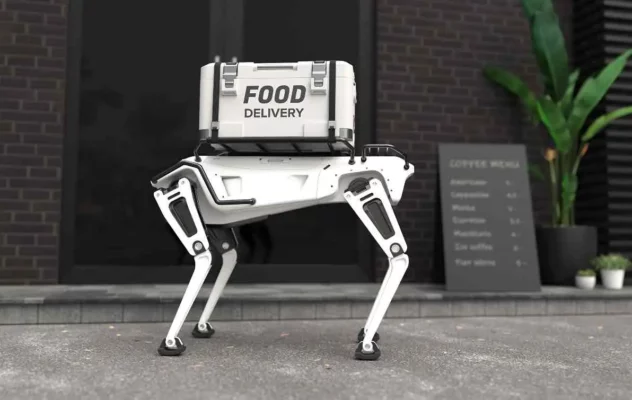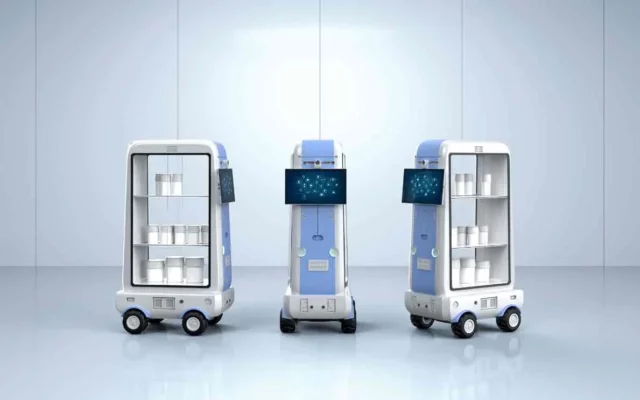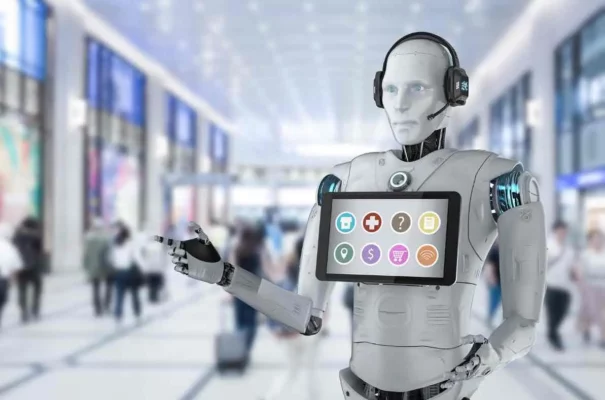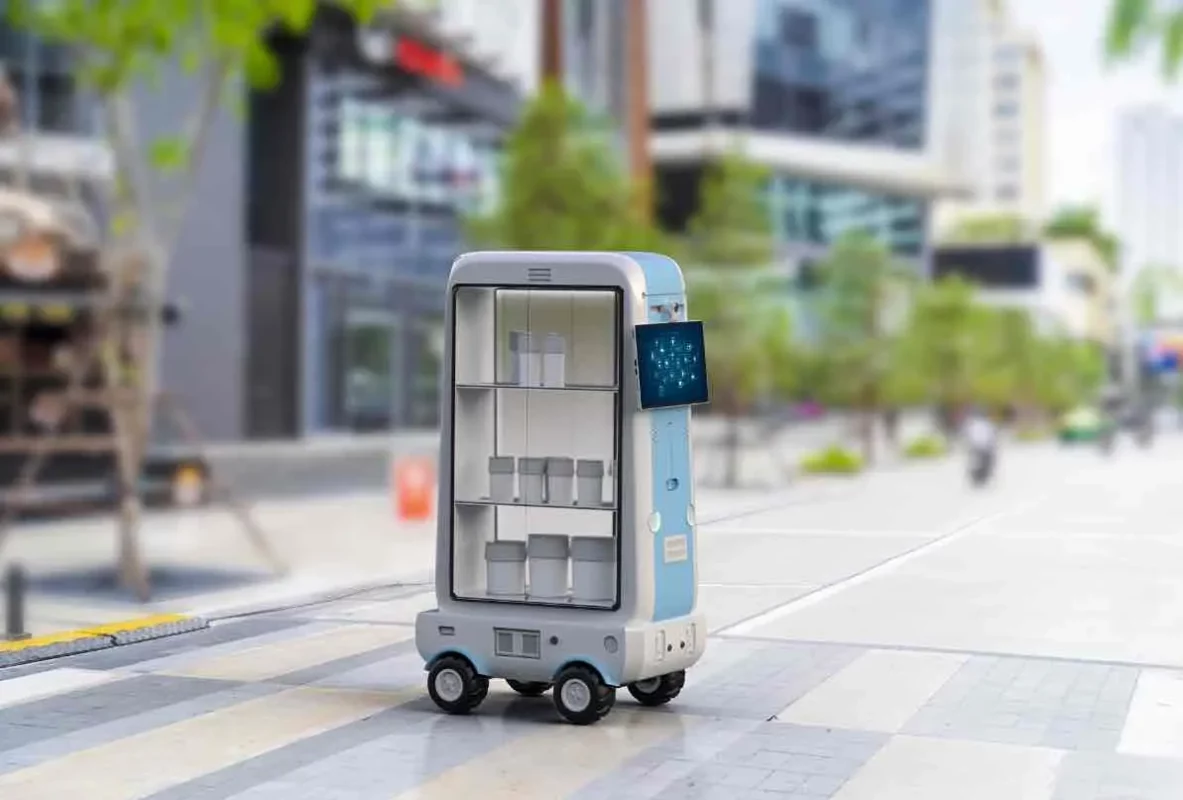Service robots are changing how you handle tasks that are tedious, dangerous, or best done by machines. Unlike industrial robots stuck in factories, service robots work in places like hospitals, hotels, homes, and warehouses. They boost efficiency, safety, and convenience for you.
This article will explain what service robots are, the different types, their key features, and where you can use them. By learning about these robots, you can see how they can fit into your operations and benefit your work.
What are Service Robots?
Service robots are machines designed to help you with tasks that are repetitive, hazardous, or time-consuming. They can work on their own or with minimal human input, making your work easier and more efficient.
Difference Between Service Robots and Industrial Robots:
Service robots are different from industrial robots because of where and how you use them. Industrial robots are used in factories for tasks like welding and assembly. Service robots, however, are meant for non-industrial environments. They help you in areas like healthcare, hospitality, and home maintenance.
Examples of Service Robots:
You can find service robots in many areas. In healthcare, they assist with surgeries and transport patients. In hospitality, they deliver room service and provide concierge services. At home, robotic vacuum cleaners and lawn mowers help you with chores. These examples show how service robots can fit into your daily life and work, making tasks easier for you.
Different Types of Service Robots:
1. Personal Service Robots:
Personal service robots help you with everyday tasks at home. Examples include robotic vacuum cleaners that keep your floors spotless, lawn mowers that take care of your garden, and personal assistants like smart speakers that help you organize your day.
2. Professional Service Robots:
Professional service robots assist in various industries to make your work more efficient and safe. In healthcare, medical robots help with surgeries and patient care. Delivery robots move goods in warehouses or bring packages to your door. Security robots patrol and monitor your property, enhancing safety.
3. Cleaning Service Robots:
Cleaning service robots take care of cleaning tasks in both homes and businesses. They can vacuum, mop, and even clean windows, saving you time and effort.
4. Delivery Service Robots:
Delivery service robots transport items within facilities or handle last-mile delivery to customers. They ensure quick and efficient service.

5. Guidance Service Robots:
Guidance service robots help visitors in places like airports, malls, and hospitals. They provide information, directions, and assistance to make your visit smoother.
6. Servicing Service Robots:
Servicing service robots handle tasks like maintenance and repairs. They perform routine checks and fix issues, ensuring that your equipment and facilities stay in top shape.
Key Features of Service Robots:
Autonomous Navigation & Mobility:
Service robots navigate and move around your environment on their own. They can avoid obstacles, find efficient paths, and perform tasks without constant supervision, making your job easier.
Advanced Sensors & Perception Systems:
These robots use advanced sensors to understand their surroundings. They can detect objects, recognize faces, and interpret different environments. This precision helps them interact effectively with their surroundings and complete tasks accurately.
AI & Machine Learning Capabilities:
Service robots are equipped with AI and machine learning. They can learn from experience, adapt to new tasks, and improve their performance over time. This means they become more efficient and useful the more you use them.
User-Friendly Interfaces & Ease of Use:
Service robots are designed to be easy for you to use. They often come with intuitive interfaces, making it simple to control and program them. You don’t need to be a tech expert to operate these robots effectively.

Applications of Service Robots:
Healthcare:
Service robots are transforming healthcare. Surgical robots assist in precise operations, improving outcomes. Patient care robots help with routine tasks, ensuring better care. Rehabilitation robots support patients in their recovery, making your work more efficient.
Hospitality & Customer Service:
In hospitality, service robots enhance guest experiences. Hotel service robots deliver items to rooms, reducing wait times. Information kiosks provide guests with directions and information, making their stay more enjoyable.
Logistics & Delivery:
Service robots streamline logistics and delivery. Warehouse robots handle inventory and move goods efficiently. Last-mile delivery robots bring packages directly to your customers, speeding up the delivery process.
Cleaning & Maintenance:
Service robots excel in cleaning and maintenance tasks. Robotic vacuum cleaners keep your floors clean without any effort from you. Window cleaning robots ensure spotless windows, saving you time and effort.
4 Benefits of Service Robots:
1. Increased Efficiency & Productivity:
Service robots handle repetitive and time-consuming tasks for you. They work quickly and accurately, allowing you to focus on more important activities. This makes your work more efficient and productive.
2. Cost Savings & Return on Investment (ROI):
Although service robots require an initial investment, they save you money over time. They reduce labor costs and minimize errors. You’ll see a good return on investment with lower operational costs and higher output.
3. Enhanced Safety & Reduced Human Labor:
Service robots take on hazardous tasks, keeping you safe. They reduce the need for human labor in dangerous environments. This means fewer workplace injuries and a safer work environment for you.
4. Improved Quality of Life & Convenience:
Service robots handle everyday chores, giving you more free time. They make tasks easier and more convenient. This improves your quality of life, allowing you to enjoy more personal or professional time.

4 Challenges in Implementing Service Robots:
1. High Initial Costs & Investment:
Buying and setting up service robots can be expensive. You need to consider the upfront costs for the robots and their maintenance. Make sure the long-term benefits outweigh these initial expenses.
2. Technical & Operational Challenges:
Implementing service robots comes with technical issues. You might face problems with programming and troubleshooting. Training your staff to use these robots effectively can also be challenging.
3. Integration with Existing Systems:
Integrating service robots into your current systems can be tricky. You need to ensure they work well with your existing equipment and software. This can take significant time and effort.
4. Ethical & Social Implications:
Using service robots raises ethical and social questions. Think about how these robots will affect jobs and employee morale. Address privacy and security concerns to ensure everyone is comfortable with the new technology.
Key Manufacturers and Brands:
Several companies are leaders in the service robot industry. They provide reliable and efficient robots for various tasks, helping you improve your operations.
Notable Products and Innovations:
- iRobot: Famous for Roomba robotic vacuum cleaners, making home cleaning easy for you.
- Intuitive Surgical: Known for the da Vinci Surgical System, which allows precise and safe minimally invasive surgeries.
- Boston Dynamics: Creates robots like Spot, which can navigate complex areas and perform inspections.
- KUKA Robotics: Offers service robots for logistics, healthcare, and manufacturing, enhancing your efficiency.
- SoftBank Robotics: Their Pepper robot improves customer service in retail and hospitality, making interactions smoother for you.
These companies and their products show how service robots can be used in different ways, providing you with advanced solutions to enhance your work.
Conclusion:
Service robots are changing how you work by handling repetitive, dangerous, and time-consuming tasks. They make your work more efficient, reduce costs, and improve safety. You can use them in healthcare, hospitality, logistics, and home maintenance. While setting them up can be challenging, the long-term benefits are worth it. Staying updated on the latest trends and advancements in service robotics will help you make the best choices for your operations. This way, you can stay ahead in a rapidly evolving field and improve your work processes.






